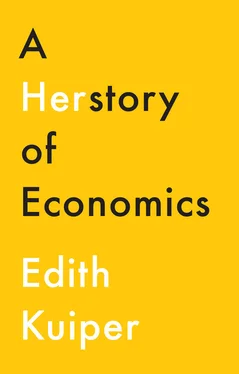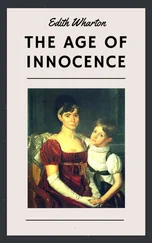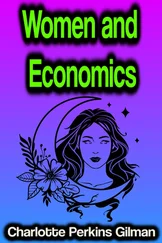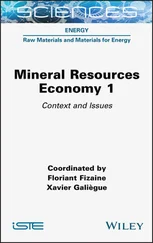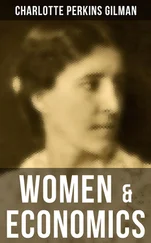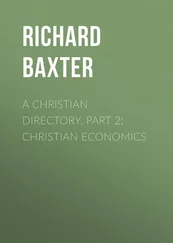Presented in this book is a rarefied group of women. In the eighteenth century, even those upper-class and aristocratic women who had learned to read and write saw their lives strictly regulated by laws and social norms that limited their ability to study, write, and publish. Practically all women in the UK were excluded from higher education and universities over most of the past four centuries, and it was against the law to teach enslaved people to read and write in the US. Because of these restrictions, most of the women who were able to read and write and who left economic texts for posterity were upper-class and aristocratic women. Some working-class and enslaved women did manage, against all the odds, to learn how to read and write, including on economic issues, and some of their texts are included in this overview.
Women economic writers wrote predominantly in non-academic genres: pamphlets, letters, diaries, household books, poems, etc. Quite a few of them commented on, translated, and engaged with the work of the male academic economists of their time. Again others focused fully on the day-to-day interests and concerns of women, which they wanted to become more widely known. Others were involved in politics, activism, and public debates. Rather than aiming to make a name for themselves, these women articulated their views in order to make their point as a contribution to their cause.
The topics these women wrote about differed from those addressed by academic economists, such as money, trade, government policies, competition, and investment. In much the same way that gender norms have set the focus of male economists, women economic writers have proceeded from their own experiences, which were highly impacted by contemporary gender expectations. These impacts were considerable, especially in the eighteenth and nineteenth centuries, when gender norms set strict limits on behavior in most West European countries. Rather than engaging in the abstract reasoning that some of their male contemporaries excelled in, it was women’s daily experiences that led them to write about how to run a household or estate, their lack of economic rights, their particular roles in production and consumption, their social and economic dependence on their husbands, their limited rights to earn and keep a wage, the difference between women’s and men’s wages, and other topics. These women developed perspectives on social and political institutions, moral behavior, and care, and thus provided a broad perspective on the economy, if one only cared to read their work and listen to their message. In this book, you will learn about these economic writers’ views on the issues they were concerned about, fought for, risked a prison or mental-hospital sentence for, or, like Olympe de Gouges during the French Revolution, lost their life over. This book will also make extensive use of women’s economic writings as background, as secondary sources, and as illustration. We will see that including their analyses in the history of economic thought will shift the focus, change the main narrative in this field, and, as an intended consequence, restructure the story of the history of economic thought with which some of you are already familiar.
Some context and central concepts
The writings of the economic authors discussed here have to be seen against the historical background of the emergence and growth of industrial society and the capitalist system. To give the reader a brief, rough sketch of the women’s and gender history from which these texts originate and to which they refer, I would like to start by stressing the profound shift brought about by the change from an agricultural and feudal society to an industrial society dominated by money values and market relations. For women of the lower and middle classes this change meant that the productive work they used to do was increasingly pulled out of the home to be conducted in workshops and factories. Women and girls who were part of the working class were forced to work outside the home and earn a subsistence wage. Most middle-class women remained in the home where their productive tasks were reduced to raising children and running the household, while their economic dependence on their husbands increased substantially. Low wages for women’s work and a lack of decent jobs open to women made it impossible for them to live independently, and the insufficient number of men available on the marriage market meant that this arrangement failed large groups of women who strived for economic security over their lifetime (Atkinson, 1987 [1914]). The emergence and strengthening of abolitionist, labor, and women’s movements, the increasing role of the government in the economy, and, more generally, the growth in productivity and technology led over the nineteenth century in Europe and the US to changes in marriage laws and property rights. As middle-class women emerged onto the labor market over the twentieth century, their participation in the workforce grew from about 20 percent in 1900 to around 50 percent in 1980 (Goldin, 1990). Although the shift of productive activities from the household to the market is still ongoing, the increase of female labor force participation has by now maxed out, stalled, and, with the onset of the COVID-19 pandemic in 2020, reversed into a decline. Thus far, the twenty-first century has brought some severe economic crises, and industrial society faces limits in various other respects, such as the exhaustion of resources, climate change, and the unsustainability of white male dominance.
Talking about some central concepts where the herstory of economics is concerned, the first and often primary question that feminist scholars ask is: “Where are the women?” This question is particularly relevant where the history of economic thought is concerned because of the absence of women on various levels; as economists, as topics of research, and in terms of their specific interests. To answer this question, one needs to dive deep into the story and bring in perspectives other than the ones usually presented by historians. After addressing that initial question, which focuses on women as a group, we also need to identify and address the differences in experience among women, including the conflicted interests between them, given that they are not all positioned equally. White women in positions of power, for instance, often sided with men in the silencing of enslaved women, thus sustaining if not joining the cruel behavior of the men in their vicinity. Women of privilege exploited domestic workers, as in the case of Hannah More, a member of the Bluestocking Society in England who appropriated the intellectual work of her servant, Ann Yearsley, under the cover of philanthropy. These conflicts and opposing interests deserve attention and inclusion in the assessment of the work under scrutiny.
Scientists and scholars, including economists, tend to build on the work of their teachers and predecessors, and work within the theoretical framework or research program within which they were trained. Many of the stories, assumptions, and values that made women invisible became part of the basic notions of these research programs and thus have implicitly taken over the field. Therefore, after decades, if not centuries, during which women were left out by the authorities in the field, it takes conscious action – with a risk to reputation and career – to bring them back in, as this means going against both the theoretical framework and the academic norms and values of the times. The absence of women in the room to ask the question “Where are the women?” has made it easier to normalize the invisibility of women in science, including economic science. This, of course, was the same, if not more so, for people of color. Their absence protected those who were present – white male economists – from having to acknowledge their privilege and enabled them to rationalize the absence of women, and women of color in particular, as a matter of merit.
Читать дальше
